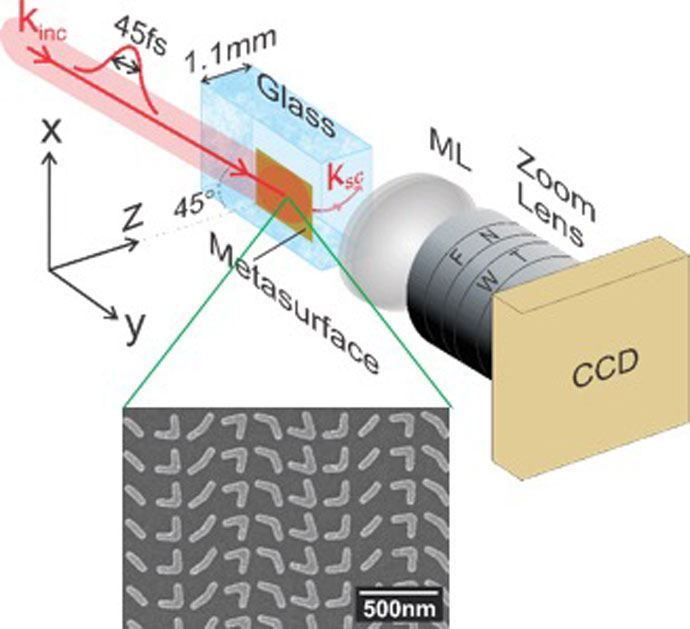Finely patterned surfaces, known as metasurfaces, can control light with unprecedented ability. Unlike traditional optical elements, metasurfaces derive their optical properties from their subwavelength texture rather than their shape.
In this work, a metasurface was designed and fabricated that accelerates light along a circular arc. The curved beam was experimentally demonstated and imaged. This flat-optics (metasurface) approach allows for simple integration of accelerating light into photonic devices, thus opening new opportunities for the advanced manipulation of light, and light-matter interaction.
The metasurface, consisting of plasmonic nanoantennas (shown in the inset), was fabricated onto a glass substrate and illuminated by ultrafast laser pulses. The trajectory of the accelerating beam was imaged with two lenses and a CCD.
This past year, the team demonstrated accelerating beams at near-infrared wavelengths in a glass substrate.
 Next, the team plans to generate accelerating beams in nonlinear crystals.
Next, the team plans to generate accelerating beams in nonlinear crystals.
The intent is to experimentally demonstrate synchrotron radiation at THz frequencies from radiation from an optical pulse propagating along a circular trajectory in a nonlinear crystal.
The work promises a fundamentally new paradigm for generating THz radiation.
- M. Henstridge1, C. Pfeiffer2, D. Wang3, A. Boltasseva3, V. Shalaev3, A. Grbic2, and R. Merlin1
1Department of Physics, U-M, 2Department of EECS, U-M, 3School of ECE, and Birck Nanotechnology Center, P-U.

